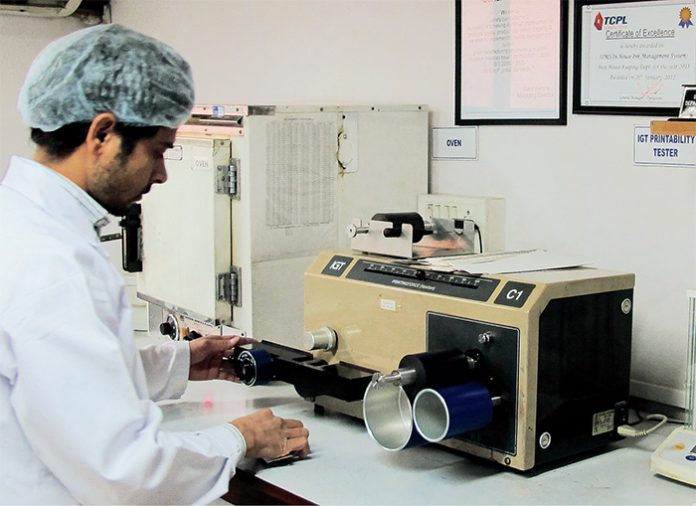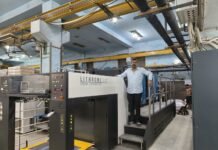Unfortunately most printers do not examine the facts or even their own experience objectively. Instead, they continue to do business on the basis of what they hear from each other or from newspapers. There are very few discussions between printers in which they honestly and mutually share their actual numbers.
At times and for various reasons, printers do not even seem to know their own numbers. Additionally, any business without significant value addition for its customers can sell only on price – it enters a cycle of hyper-competition. In actuality, the Indian economy is large; in 2014 it will be US$ 1. 96 trillion (Rs. 119,44240,00,00,000 crore or 119442 arab) and it is growing and so is the amount of printing. In commercial printing, the printing of books in both the number of titles and number of copies is still growing in India.
There is significant growth also in digital printing although its volume base is still very small compared to sheetfed and webfed commercial printing. Even accepting the most pessimistic rates of growth for commercial printing and that it may be growing at a rate that is less than half of the packaging industry, it cannot be growing less than 4.9%.
However, this growth rate seems quite low to commercial printers and is causing pain to those who have invested in sheetfed and webfed multicolour offset presses. Some are barely able to repay their low-interest forex loans with a devalued Rupee and are unable to feed their machines for more than a single shift and this has led to unsustainable competition on price.What are the reasons for this crisis and what are commercial printers to do?
The crisis of incremental growth
For any business to be sustainable, it has to grow to the extent that it remains relevant to its customers and that its profits stay ahead of its inflationary costs and enable it to invest in growth. Commercial printers who invested in CtP and multicolour presses in the last twenty years met the market demand for improved quality of color printing with reduced lead times.
Those who invested in automated finishing and binding equipment were able to professionally service the demand for better quality printed and finished in-time end products. Crucially they were able to reduce the work in progress and improve output and their own billing and cash flow cycles.
By and large those who invested in some proportion of new equipment (some but not necessarily all new machines in each department) will remain sustainable businesses. However, those who have not been able to buy new equipment at all and who have not specialized in special niche segments of the market, are today, quite understandably in trouble and often unable to decide their next moves.
Incremental growth has often meant an unwillingness to build a new plant which entails huge cost on land and building but without which it is difficult to contain a complete modern production workflow or to motivate either next generation heirs or professionals. Sometimes the situation is circular – the next generation is neither interested in working in a small unprofessional operation nor interested in the sacrifices needed to transform and grow a legacy company into a structured and organized business.
This is one of the reasons that new commercial printing plants are emerging in Tier 2 and Tier 3 cities that are closer to new markets and also where the industry is still seen as a greenfield opportunity. But even here for those who build new plants and purchase brand new or young factory reconditioned machines, single shift operation is no longer sustainable.
This means that commercial printers even in new centres must grow into organized businesses where their machines are run under professional supervision for at least two shifts.
Alternatives
The first and most reasonable alternative for all commercial printers is to simply grow the business into a structured process-oriented business that offers its customers exceptional quality and service. Investments made and risks taken must be sufficient to attract professional talent either from the promoter’s family or from outside. Reasonable alternatives include serious look at book printing exports and premedia exports.
Other alternatives
Should commercial offset printers diversify to web-to-print, digital printing, label printing, or to board packaging? All of these are possible and almost anything works in the up-cycle of a large and growing economy. However, simply changing direction or adding investment without an assessment of the target segments and what value a business will bring to potential customers is not likely to work.
Digital print and web-to-print
The first alternative of digital printing is generally a low cost investment at first in terms of hardware. However, it requires serious investment in software and human resource if it is to succeed. In addition, it requires investment in a web-to-print platform. In any case web-to-print will become SMI’s Mehtas at the Ambernath plant Japanese Packaging Design Kawaii, Minimal, Edgy, Playfull IPP March14-MAC-K1-Sid_IPP March 2014 20/03/14 10:46 AM Page 34 essential for commercial printers to be sustainable.
Label printing
Some offset commercial printers have entered label printing successfully. However, the most successful one had some niche quality on their side such as a knowledge of security printing or specialized prepress and software skills. The changeover to narrow web flexo is not for everyone because that industry itself requires huge redundancies and is increasingly attracting consolidation by larger packaging players. It also requires learning a new technology – flexography – and a new production workflow. However, the label industry is itself under competitive pressure currently.
Board packaging
Many commercial printers with multicolor presses believe that they can add a diecutter and a folder-gluer and become monocarton converters. Yes, some commercial have made this transition and other will do so in the future, but there are several serious dangers in this diversification if it is not well-thought out.
In the current scenario this is a highly capital intensive diversification not just for equipment, but also for land and building, processes and human resources and working capital. The monocarton packaging segment will in the long run only tolerate organized printers and converters.
The basic requirements are quite large, comprehensive and complex – beyond simply plant and equipment – and these require not only access to capital but at an interest rate that is sufficiently low in order to withstand periods of less than robust growth in the economy. Commercial printers who enter monocartons will be competing with efficient, high quality and multi-locational players who have a head start of more than ten years.
This is not an alternative for the faint-hearted but for those who are clear that they are interested in establishing organized, professional and sustainable businesses and are prepared for a complete cultural change than that of most family-owned commercial printers
















